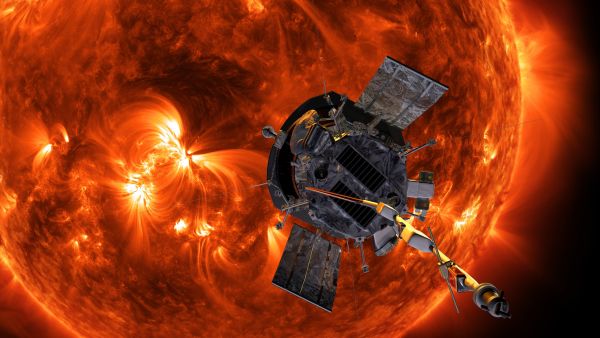NASA sun spacecraft whizzes through 9th solar flyby

NASA's sun-grazing spacecraft is making its ninth daring dive past our neighborhood star in a continuing quest to puzzle out secrets of how the sun works.
Parker Solar Probe was closest to the sun during its latest flyby on Monday (Aug. 9) at 3:10 p.m. EDT (1910 GMT), when the spacecraft was about 6.5 million miles (10.4 million kilometers) away from the sun's surface. At that time, the probe was traveling at about 330,000 mph (532,000 km/h). The spacecraft is focusing on understanding the mechanism by which the sun's atmosphere gets so hot — thousands of degrees hotter than the sun's surface — and the origins of the solar wind, a constant flood of charged particles streaming across the solar system.
As the spacecraft flies ever closer to the sun, it is better poised to crack these mysteries. "We are getting into the critical phase of the Parker mission and we're focused on quite a few things during this encounter," Nour E. Raouafi, Parker Solar Probe project scientist at Johns Hopkins University's Applied Physics Laboratory, said in a NASA statement.
Related: NASA's Parker Solar Probe captures stunning Venus photo
Read more: What's inside the sun? A star tour from the inside out
"We expect the spacecraft to be flying through the acceleration zone of the perpetual flow of charged particles that make up the solar wind," Raouafi added. "Solar activity is also picking up, which is promising for studying larger-scale solar wind structures, like coronal mass ejections, and the energetic particles associated with them."
During Monday's flyby, the spacecraft matched its existing records — which are also humanity's records overall — for the closest approach to the sun and fastest-moving object of a spacecraft. However, Parker Solar Probe will soon resume its spate of breaking both records.
In October, the mission will fly past Venus for the fifth time, using the planet's gravity to adjust its trajectory through space and sneak still closer to the sun. After this year's maneuver, two more Venus flybys remain on the spacecraft's agenda before the end of its current planned mission, which will come in 2025. By then, the spacecraft will be flying just 3.8 million miles (6.1 million kilometers) from the surface of the sun.
Sign up for the Live Science daily newsletter now
Get the world’s most fascinating discoveries delivered straight to your inbox.
Although the team behind Parker Solar Probe has some expectations for what today's observations will show, it's still possible the scientists will stumble on yet another solar surprise.
"You never know what else you'll find exploring this close to the sun," Raouafi said, "and that's always exciting."
Email Meghan Bartels at mbartels@space.com or follow her on Twitter @meghanbartels. Follow us on Twitter @Spacedotcom and on Facebook.
Meghan is a senior writer at Space.com and has more than five years' experience as a science journalist based in New York City. She joined Space.com in July 2018, with previous writing published in outlets including Newsweek and Audubon. Meghan earned an MA in science journalism from New York University and a BA in classics from Georgetown University, and in her free time she enjoys reading and visiting museums. Follow her on Twitter at @meghanbartels.










